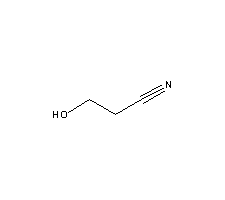- 109792-60-11-Boc-1,12-diaminododecane
- 109794-97-0Harmalidine
- 109-79-51-Butanethiol
- 109806-71-51-Piperazineethanol,4-[(4-chlorophenyl)phenylmethyl]-
- 109-80-81,3-Propanedithiol
- 1098102-93-26-Dibromothieno[3,4-b]thiophene-2-carboxylic acid dodecyl ester
- 109814-50-84H-Pyrido[1,2-a]pyrazin-4-one,octahydro-
- 109-81-91,2-Ethanediamine,N1-methyl-
- 109-82-0Acetonitrile,2-(methyleneamino)-
- 109825-55-0Benzenamine,2-(1,1-dimethylethyl)-4,6-dinitro-N-[4-(trifluoromethyl)phenyl]-
Hot Products
- 109851-98-1Sodiumdodecaborate,10Benriched
- 109882-76-0MOME
- 1099-45-2Ethyl (triphenylphosphoranylidene)acetate
- 1099-87-2Sodium prasterone sulfate
- 11000-17-2Vasopressin
- 11006-34-1Chlorophyllin
- 11006-55-6SODIUM TAUROGLYCOCHOLATE
- 110-12-35-Methyl-2-hexanone
- 104987-11-3Tacrolimus
- 141-53-7Sodium formate
- 8001-54-5Quaternary ammonium compounds, alkylbenzyldimethyl, chlorides
- 9003-39-8Povidone
- 10161-34-9Trenbolone acetate
- 402957-28-2Telaprevir
- 68-19-9Cyanocobalamin

|
Basic Information |

|
Post buying leads |

|
Suppliers |

|
Cas Database |

| Name |
3-Hydroxypropionitrile |
EINECS | 203-704-8 |
| CAS No. | 109-78-4 | Density | 1.04 g/cm3 |
| PSA | 44.02000 | LogP | -0.10762 |
| Solubility | >=10 g/100 mL at 20 °C in water | Melting Point |
-46 °C |
| Formula | C3H5NO | Boiling Point | 229.6 °C at 760 mmHg |
| Molecular Weight | 71.0788 | Flash Point | 92.7 °C |
| Transport Information | 2810 | Appearance | Colourless or straw-coloured liquid |
| Safety | 26-36-24/25 | Risk Codes | 36/37/38 |
| Molecular Structure |
|
Hazard Symbols |
 Xi Xi
|
| Synonyms |
Hydracrylonitrile(8CI);1-Cyano-2-hydroxyethane;2-Cyanoethanol;2-Cyanoethyl alcohol;2-Hydroxycyanoethane;2-Hydroxyethyl cyanide;3-Hydroxypropanenitrile;Ethylene cyanhydrine;Ethylene cyanohydrin;Glycolcyanohydrin;NSC 2598;b-Cyanoethanol;b-Hydroxyethyl cyanide;b-Hydroxypropionitrile; |
Article Data | 71 |
3-Hydroxypropionitrile Synthetic route

| Conditions | Yield |
|---|---|
| With sodium sulfide; benzyltri(n-butyl)ammonium chloride In water for 0.166667h; | A 98% B n/a |

| Conditions | Yield |
|---|---|
| With aluminum oxide; boron trifluoride diethyl etherate In propylene glycol at -10 - 10℃; for 28h; Reagent/catalyst; Temperature; | 97.3% |

| Conditions | Yield |
|---|---|
| With PEG400 for 6h; Heating; | 93% |

| Conditions | Yield |
|---|---|
| With sodium hydroxide at 50℃; for 0.2h; | 92% |
| With sodium hydroxide In water at 50℃; for 4h; | 65% |
| With water; copper(II) oxide |
- 90087-76-6, 89923-32-0
3-((tetrahydro-2H-pyran-2-yl)oxy)propanenitrile

- 109-78-4
3-Hydroxypropionitrile

| Conditions | Yield |
|---|---|
| With silica-supported NaHSO4 In methanol at 20℃; for 0.25h; | 92% |
| With zinc(II) trifluoromethanesulfonate In methanol at 20℃; for 0.666667h; | 81% |

- 109-78-4
3-Hydroxypropionitrile

| Conditions | Yield |
|---|---|
| With acetic acid; 2,3-dicyano-5,6-dichloro-p-benzoquinone; sodium nitrite at 20℃; for 18h; Green chemistry; chemoselective reaction; | 84% |

| Conditions | Yield |
|---|---|
| With sodium iodide In ethanol for 5h; Heating; | 80% |
| at 100℃; | |
| With ethanol |
- 131379-56-1
3-(1,1,1,3,3,3-hexamethyl-2-(trimethylsilyl)trisilan-2-yl)propanenitrile

- 109-78-4
3-Hydroxypropionitrile

| Conditions | Yield |
|---|---|
| With 2,3-dimethyl-1,4-benzoquinone; tetrabutyl ammonium fluoride; oxygen In tetrahydrofuran for 0.833333h; Ambient temperature; | 71% |

| Conditions | Yield |
|---|---|
| With tetramethyl ammoniumhydroxide In water at 60℃; for 0.5h; Temperature; Reagent/catalyst; Time; Michael Addition; Microwave irradiation; | A 68% B n/a |

| Conditions | Yield |
|---|---|
| With lithium hypochlorite In water Ambient temperature; | A 9.8% B 60% |
| With lithium hypochlorite In water Product distribution; Mechanism; Ambient temperature; other solvent and additives; var. cyclopropanamines; | A 9.8% B 60% |
3-Hydroxypropionitrile Chemical Properties
Hydracrylonitrile(109-78-4)'s molecular formula is C3H5NO and its formula weight is 71.08.
The density of hydracrylonitrile(109-78-4) is 1.04 and it has a melting point of -46°C. The Boiling point is 228°C. The refractive index is about 1.4246-1.4266. Its flash point is 128°C. The water solubility should be equal to or greater than 10 g/100 mL at 20°C.
Hydracrylonitrile(109-78-4) has the property of being dissolved in water, ethanol, acetone and methyl ethyl ketone(MEK). It is not soluble in benzene, light petroleum, carbon bisulfide and Carbon tetrachloride.
The molecular structure of hydracrylonitrile(109-78-4) :
3-Hydroxypropionitrile Uses
3-Hydroxypropionitrile Toxicity Data With Reference
| 1. | skn-rbt 10 mg/24H open | JIHTAB Journal of Industrial Hygiene and Toxicology. 26 (1944),269. | ||
| 2. | skn-rbt 520 mg open MLD | UCDS** Union Carbide Data Sheet. (Industrial Medicine and Toxicology Dept., Union Carbide Corp., 270 Park Ave., New York, NY 10017) 8/18 ,1967. | ||
| 3. | eye-rbt 500 mg | AJOPAA American Journal of Ophthalmology. 29 (1946),1363. | ||
| 4. | orl-rat LD50:3200 mg/kg | 38MKAJ Pattys Industrial Hygiene and Toxicology. 2C (1982),4875. | ||
| 5. | orl-mus LD50:1800 mg/kg | AMIHBC AMA Archives of Industrial Hygiene and Occupational Medicine. 8 (1953),371. | ||
| 6. | ihl-mus LC33:300 mg/m3/2H | 85GMAT Toxicometric Parameters of Industrial Toxic Chemicals Under Single Exposure Izmerov, N.F., et al.,Moscow, USSR.: Centre of International Projects, GKNT,1982,66. | ||
| 7. | ipr-mus LD50:500 mg/kg | NTIS** National Technical Information Service. (Springfield, VA 22161) (Formerly U.S. Clearinghouse for Scientific and Technical Information) AD277-689 . | ||
| 8. | orl-rbt LDLo:900 mg/kg | AMIHBC AMA Archives of Industrial Hygiene and Occupational Medicine. 8 (1953),371. | ||
| 9. | skn-rbt LD50:5000 mg/kg | UCDS** Union Carbide Data Sheet. (Industrial Medicine and Toxicology Dept., Union Carbide |


